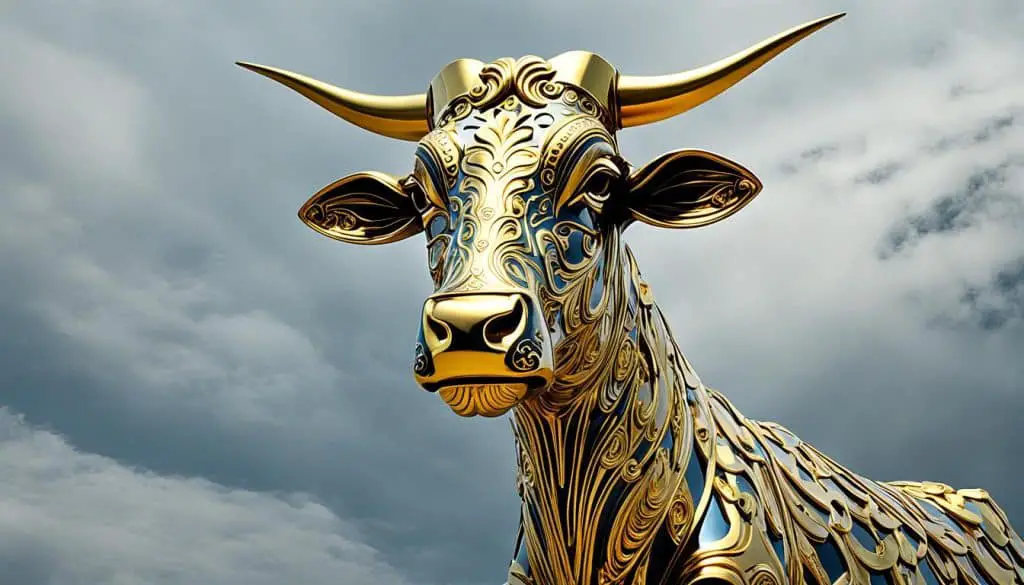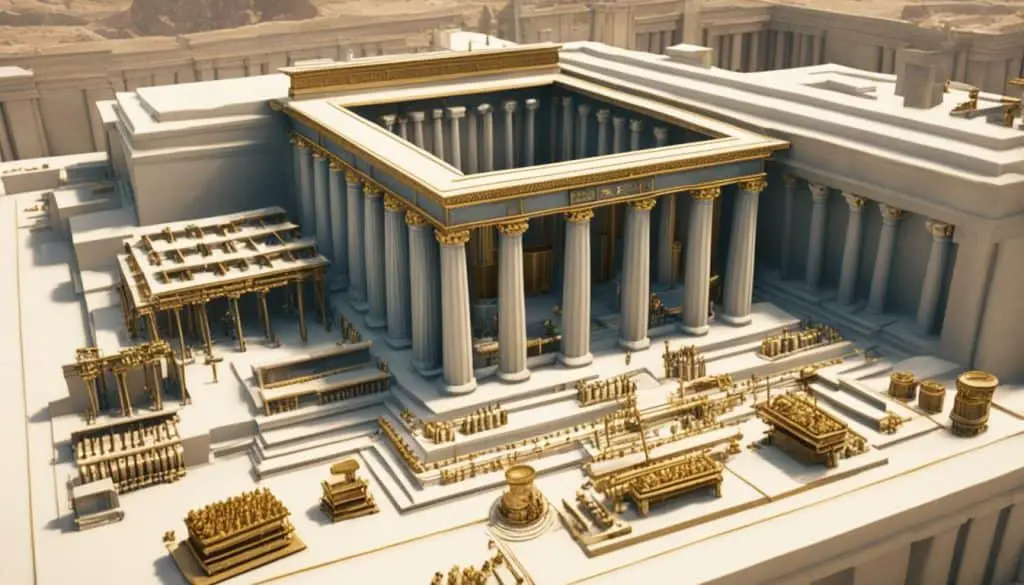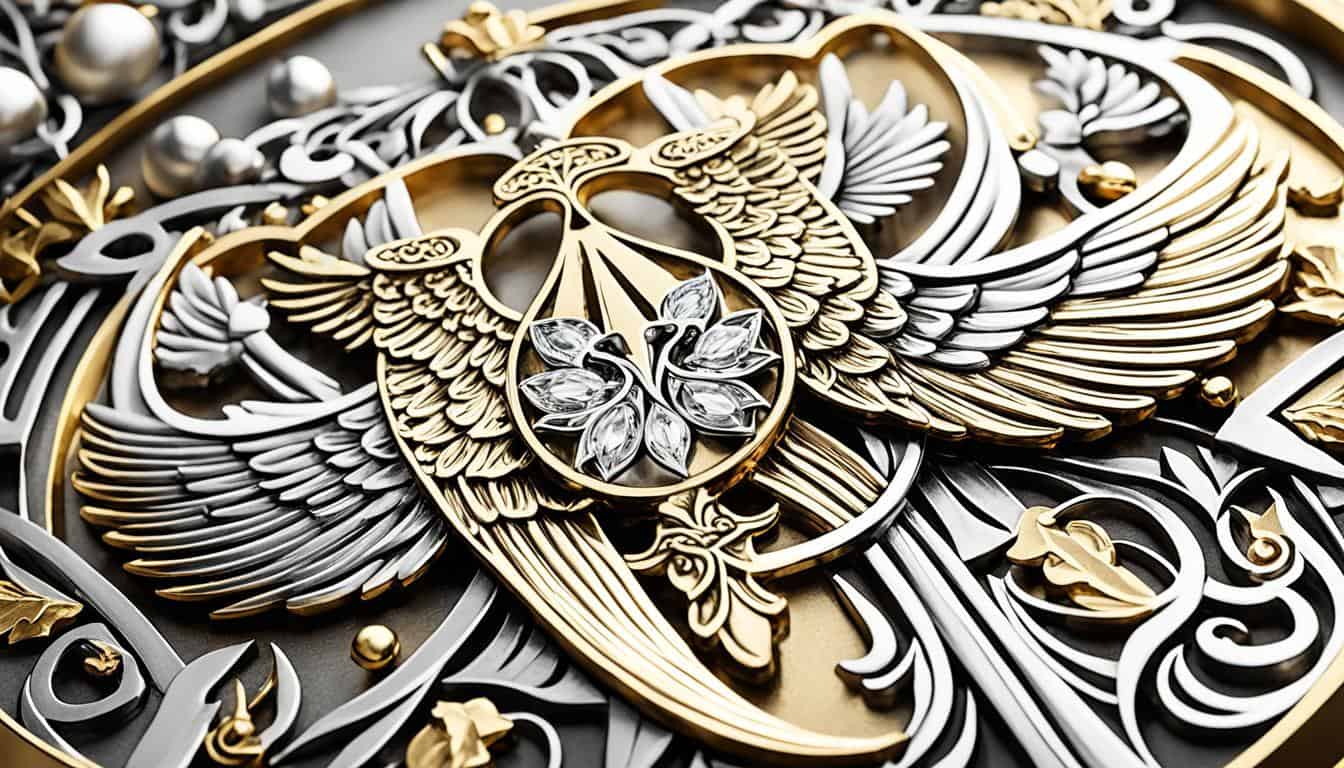Table of Contents
Did you ever wonder about the goldsmiths and silversmiths in the Bible? How their work impacted sacred places and items? Let’s explore their role in creating the Tabernacle and beautifying Solomon’s Temple.
The Bible highlights the work of these artisans in six places. They crafted the Tabernacle with great skill. They also decorated Solomon’s Temple, leaving behind a great legacy. We will delve into the art and history of these craftspeople.
We will dive into the Bible to see how gold and silversmithing affected sacred buildings and rituals. Witness the beauty and care that went into their work. Learn how their art testified to their skill and commitment.
Join us to uncover the mystery of the goldsmiths and silversmiths in the Bible. Their talent and influence on religion will amaze you. Get ready for a journey into their intriguing stories.
Crafting the Tabernacle (Exodus 31:3-5)
The Tabernacle’s creation is a stunning story in the Bible. It was a mobile sanctuary used by the Israelites. Bezalel, a man filled with God’s spirit, was an expert craftsman. He had skills in working with gold and silver. In Exodus 31:3-5, Bezalel’s talents are highlighted as essential for the Tabernacle’s construction.
Bezalel was perfect for the job because of his divine talents. He could make beautiful pieces for the Tabernacle from gold and silver.
Bezalel paid close attention to detail. He knew his materials well. This led to the creation of the Tabernacle. The Ark of the Covenant and the sacred vessels were crafted with his exceptional skill.
“Craftsmanship, as described in Exodus 31:3-5, was an essential component in the construction of the Tabernacle. Bezalel’s expertise in goldsmithing and silversmithing played a vital role in creating a sacred space worthy of God’s presence.”
The Tabernacle’s beauty showed the Israelites’ love and respect. Bezalel and his fellow artisans put their hearts into the work. Each piece reflected their devotion to God.
The Tabernacle was the heart of their worship. It showed the importance of craftsmanship in honoring God. This laid a foundation for future religious spaces.
Materials Used in the Crafting of the Tabernacle
| Material | Usage |
|---|---|
| Gold | Adorning the Ark of the Covenant, the Table of Showbread, and the Golden Lampstand |
| Silver | Creating the sockets for the Tabernacle boards and the utensils used in the sanctuary |
| Acacia Wood | Constructing the Tabernacle framework, including the pillars and boards |
| Fine Linen | Weaving the elaborate curtains, veils, and priestly garments |
| Precious Stones | Embroidering the ephod and breastpiece of the High Priest’s garments |
The materials used in the Tabernacle show a dedication to excellence. Each material was chosen for its symbolic meaning. This made the Tabernacle a truly special place for the Israelites.
The Golden Calf (Exodus 32:2-4)
When Moses is away, the Israelites become impatient. They ask Aaron, Moses’ brother and a high priest, for a physical idol. Aaron takes their gold, melts it, and creates the Golden Calf. They start worshipping this new idol.
This story shows how impatient and unfaithful the Israelites are. They had seen miracles and got help directly from God. But they choose to idolize something they made quickly. This mistake proves they didn’t trust in God’s bigger plan.
The Golden Calf also teaches us about idol worship. The Israelites, influenced by other cultures, think a physical object can represent the divine. Aaron makes the idol for them, showing his role as a priest and the power of gold in idol worship.
“And Aaron said unto them, Break off the golden earrings, which are in the ears of your wives, of your sons, and of your daughters, and bring them unto me.”
Exodus 32:2
Aaron’s Role
In making the Golden Calf, Aaron has a key part. He’s the high priest, responsible for teaching the people about God. But faced with their impatience, he gives in and makes the idol. Aaron’s actions show the struggles leaders face in sticking to their beliefs in hard times.

| Keyword | Occurrences |
|---|---|
| Golden Calf | 2 |
| impatience | 1 |
| idol | 2 |
| Aaron | 2 |
| gold jewelry | 1 |
The Golden Calf story reveals a lot about the Israelites’ impatience, the lure of idols, and Aaron’s significant role in making this false god.
Priestly Garments (Exodus 39:3)
Exodus 39:3 gives us a close look at how the priestly garments were made. These clothes were for the High Priest and other priests. Skilled Israelite goldsmiths put a lot of care into making them.
In ancient Israel, the High Priest had an important position. He led in the priesthood and in many worship rituals. It was key that his clothing looked impressive and carried important meanings. Making these clothes needed great care and attention.
“And they beat the gold into thin sheets and cut it into wires, to work it into the blue and the purple and the scarlet yarns, and into the fine twined linen, in skilled design. They made for the ephod attaching shoulder pieces, joined to it at its two edges. And the skillful work they gave to the ephod its woven binding, to bind it on, and to bind on the skillfully woven bandage on it. They made attaching shoulder pieces for it; it was joined together on its two edges.”
Priestly Garments, Exodus 39:3 (ESV)
The ephod was a key part of the High Priest’s clothing. It was decorated with special stones to represent each of the twelve tribes of Israel. The attaching shoulder pieces and the skillfully woven bandage made it even more beautiful.
But it wasn’t just the ephod that was special. The breastpiece and tunic were also made with great skill. Together, all these items reflected the important and serious work of the priest.
The garments showed off the amazing work of the Israelite goldsmiths. They also reminded everyone of the priests’ holy tasks. This made the clothes very special and important.
By carefully following Exodus 39:3, the Israelite goldsmiths proved their dedication and talent. They created outfits that were not just beautiful but also showed their respect for their faith.
| Priestly Garments | Description |
|---|---|
| Ephod | The ephod was a sleeveless garment worn by the High Priest and adorned with precious stones representing the twelve tribes of Israel. |
| Attaching Shoulder Pieces | The attaching shoulder pieces were intricately woven and joined to the ephod, adding to its visual grandeur. |
| Woven Bandage | The skillfully woven bandage was used to bind the ephod, further enhancing its elaborate design. |
| Breastpiece | The breastpiece was adorned with twelve precious stones, each inscribed with the names of the twelve tribes of Israel. |
| Tunic | The tunic, made of fine linen, was worn underneath the ephod and served as an additional layer of ceremonial attire. |
Temple Construction (1 Chronicles 22:14-15)
In 1 Chronicles 22:14-15, we see King David plan for the Temple his son Solomon will build. He gathers lots of gold and silver for it.
He knows the Temple needs skilled workers to be successful. The goldsmiths and silversmiths are key. They will make beautiful objects for the Temple.
“Indeed, I have taken great pains to prepare for the house of the Lord one hundred thousand talents of gold and one million talents of silver, and an abundance of bronze and iron beyond weighing, for there is so much of it; timber and stone, too, I have prepared. And you have many workmen: stonecutters, masons and carpenters, as well as those skilled in every kind of work in gold, silver, bronze and iron—craftsmen beyond number. Now begin the work, and the Lord be with you!”
David is really committed to this project. He wants to make sure the Temple is beautiful and filled with the best work.

The gold and silversmiths will make the Temple stunning. Their work adds deep care and love for God.
David’s support for the Temple and the craftsmen shows his deep faith. He believes the Temple should be the best it can be for God.
Solomon’s Temple (1 Kings 7:14)
In 1 Kings 7:14, the description of Solomon’s Temple shows the amazing effort put into it. Hiram, a skilled craftsman from Tyre, and Israelite artisans highlighted their craftsmanship. They used gold and silver to make the temple a dazzling place.
Hiram’s exceptional skill was key in the temple’s design. He and the Israelite artisans worked closely, ensuring every touch was magnificent. They crafted detailed golden pieces like candlesticks, altars, and vessels with excellence.
Silver added even more beauty and importance to the temple. The teams from Israel and Hiram’s group in Tyre combined to create beautiful silver items. These included basins and bowls, enhancing the temple’s inside.
Thanks to Hiram, Israelite artisans, and the metals they used, Solomon’s Temple stood out as a remarkably beautiful and holy place. Gold and silver embellishments spoke of their talent and creativity, bringing a legacy of wonder and motivation.




